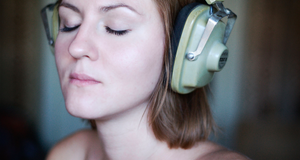From Elon Journal of Undergraduate Research in Communications VOL. 4 NO. 1The Influence of Rap and Hip-Hop Music: An Analysis on Audience Perceptions of Misogynistic LyricsAbstractUsing a qualitative content analysis and online survey, this research examined how college students perceive and respond to the portrayal of women when exposed to misogynistic lyrics. Based on cultivation theory, this study analyzed the lyrical content of popular rap and hip-hop songs (n=20) on Billboard’s “Hot 100” chart between 2000 and 2010. Song lyrics were classified into one or more of the following coding categories: demeaning language, rape/sexual assault, sexual conquest and physical violence. Themes of power over, objectification of and violence against women were identified as prevalent throughout the content analysis sample. Survey results indicated a positive correlation between misogynous thinking and rap/hip-hop consumption. This study examined the culture of rap/hip-hop music and how misogynistic lyrical messages influenced listeners’ attitudes toward intimate partner violence. Adams and Fuller (2006) define misogyny as the “hatred or disdain of women” and “an ideology that reduces women to objects for men’s ownership, use, or abuse” (p. 939). Popular American hip-hop and rap artists, such as Eminem, Ludacris and Ja Rule, have increasingly depicted women as objects of violence or male domination by communicating that “submission is a desirable trait in a woman” (Stankiewicz & Rosselli, 2008, p. 581). These songs condone male hegemony in which “men find the domination and exploitation of women and other men to be not only expected, but actually demanded” (Prushank, 2007, p. 161). Thus, these messages glorify violence against women, including rape, torture and abuse, and foster an acceptance of sexual objectification and degradation of women (Russo & Pirlott, 2006). These misogynistic themes first emerged in rap/hip-hop songs in the late 1980s and are especially apparent today with women being portrayed as sex objects and victims of sexual violence (Adams & Fuller, 2006; Russo & Pirlott, 2006). Young adults between the ages of 16 and 30 are the most likely age group to consume rap/hip-hop music, and in turn, may become desensitized to the derogatory lyrics condoning relationship violence and sexual aggression (Smith, 2005). Specifically, the college-aged demographic has been influenced by the prevalence of sexually explicit media and the negative images of women presented in hip-hop culture, which “teach men that aggression and violence are closely linked to cultural views of masculinity” (Wood, 2012, p. 105). Furthermore, the physical abuse of women is celebrated in rap/hip-hop songs promoting “models of masculinity that sustain and encourage misogyny” (Cobb & Boettcher, 2007, p. 3026).This paper evaluated the impact of cultivation theory and whether exposure to misogynistic rap increases the acceptance of perpetrating violent acts against women (Johnson, Jackson, & Gatto, 1995). Also, this paper incorporated the disinhibition hypothesis in relation to how audiences become desensitized to media violence after repeated exposure (Rosenberry & Vicker, 2009). Analyzing the relationship between rap/ hip-hop lyrical content and song popularity showed how audiences have responded to objectifying messages through their music consumption. II. Literature ReviewIssue of Domestic ViolenceDomestic violence is a pressing issue often deemed acceptable by the media, and thus, challenges men and women’s perceptions of how they should treat their partners in their relationships. Over the past two decades, the United Nations Commission on the Status of Women “reported a tremendous increase in the representation of violence against women, particularly sexual violence, in the media” (Stankiewicz & Rosselli, 2008, p. 581). Studies suggest that increased exposure to misogynistic messages has desensitized audiences to the issue of intimate partner violence and fosters greater tolerance of male aggression (Barongan & Hall, 1996). The mass media portrays domestic violence both visually and aurally by normalizing the use of force in relationships, which correlates to the fact that “more than one in three women in the United States have been sexually coerced by a partner” (Nettleton, 2011, p. 140). Therefore, it is not surprising that “men commit at least 90% of documented acts of physical intimate partner violence in the U.S.” by exerting control over women (Wood, 2012, p. 301). The ambiguity of what constitutes sexual assault or intimate partner violence contributes to public misperception of domestic violence. The Office of Violence Against Women defines domestic violence as a “pattern of abusive behavior in any relationship that is used by one partner to gain or maintain power and control over another intimate partner” (“What Is Domestic Violence?,” 2012). Physical, sexual and psychological actions or threats of abuse toward a partner are the most common forms of domestic violence (“What Is Domestic Violence?,” 2012). Domestic violence includes behaviors that “intimidate, manipulate, humiliate, isolate, frighten, terrorize, coerce, threaten, blame, hurt, injure, or wound someone” (“What Is Domestic Violence?” 2012). The National Violence Against Women Survey, conducted by Tjaden and Thoennes (2000), estimates that one in five women in the United States is physically assaulted in her lifetime and one in 13 is raped by an intimate partner (Russo & Pirlott, 2006). While women of all ages are at risk of experiencing domestic and sexual violence, those between the ages of 20-24 are most susceptible to experiencing nonfatal intimate partner violence (“Get the Facts: The Facts,” 2007). According to a 2007 study by Laurel Crown and Linda Roberts, “one-half of college women in their senior year reported one or more unwanted sexual interactions during their college careers” (Wood, 2012, p. 287). The perpetration of violent behavior can be explained using the cognitive learning theory, asserting, “individuals receive messages through society and media that shape relationship ideologies” (Bretthauer, Zimmerman, & Banning, 2006, p. 30). This study specifically analyzed college students’ views on the issue of domestic violence and its portrayal in popular rap/hip-hop music. Misogyny in Rap/Hip-Hop MusicIn a recent content analysis of six types of media, Pardun, L’Engle, and Brown (2005) found that music, in particular, contained substantially more sexual content than any other media outlets. Sexually explicit and derogatory lyrics are especially apparent in rap music, which has been criticized for its graphic derogatory presentation of women using lyrics that objectify, exploit or victimize them (Weitzer & Kubrin, 2009; Cobb & Boettcher, 2007). Adams and Fuller (2006) assert that rap music reduces women to objects “that are only good for sex and abuse,” which “perpetuate ideas, values, beliefs, and stereotypes that debase women” (p. 940). This study also noted six themes common in misogynistic rap music, and further examined three of them: derogatory statements about women in relation to sex; statements involving violent actions toward women, particularly in relation to sex; and references of women as usable and discardable beings (Adams & Fuller, 2006). Armstrong (2001) conducted a content analysis of 490 rap songs from 1987 to 1993, in which 22% contained lyrics featuring violence against women including assault, rape and murder. His study classified rap songs into different categories in which rappers either pride themselves on sex acts appearing to harm women, justify other acts of violence, warn women who challenge male domination that they will be assaulted, and/or seem to invite male violence against women (Armstrong, 2001). Weitzer and Kubrin (2009) conducted a follow-up study analyzing the portrayal of women in 403 rap songs through a content analysis, in which themes of derogatory naming and shaming of women; sexual objectification of women; distrust of women; legitimation of violence against women; and celebration of prostitution and pimping appeared at the greatest frequency. Sexual objectification was found to occur in 67% of the misogynistic lyrics in their songs sampled (Weitzer & Kubrin, 2009). This study further examined the frequency of explicit music content found in the past decade’s worth of popular rap/hip-hop music. Furthermore, stereotyped gender roles emerged from lyrics containing sexual imagery that promote the “acceptance of women as sexual objects and men as pursuers of sexual conquest,” (Martino, Collins, Elliott, Strachman, Kanouse, & Berry, 2006, p. 438). Influence on Audience PerceptionsGeorge Gerbner focused on violent television content and how audience exposure to these violent images influences their views and conception of social reality, by cultivating a “common view of the world” (Rosenberry & Vicker, 2009, pg. 165). As a result, Gerbner developed cultivation theory by examining how long-term exposure to violent media messages alters audience perceptions of violence in their everyday lives (Rosenberry & Vicker, 2009). This approach can be applied to all forms of media by interpreting individuals’ reactions to violent content; thus, this study will incorporate cultivation theory in an analysis of misogynistic lyrics affecting listeners’ attitudes toward domestic violence (Rosenberry & Vicker, 2009). In reviewing more than five decades worth of research, Potter (1999) extended cultivation theory to determine the following effects of exposure to media violence: Exposure to violent portrayals in the media can lead to subsequent viewer aggression through disinhibition. Long-term exposure to media violence is related to aggression in a person’s life. Media violence is related to subsequent violence in society. Exposure to violence in the media can lead to desensitization. People exposed to many violent portrayals over time will come to be more accepting of violence (Rosenberry & Vicker, 2009, p. 169). In turn, Dr. Edgar Tyson (2006) developed a 26-item instrument, the Rap Music Attitude and Perception (RAP) Scale, the “only tool available to access an individual’s attitude toward and perception of rap music lyrics” (p. 212). The RAP Scale contains three constructs: empowerment, artistic aesthetics and violent misogynistic. This study incorporated the empowerment and violent misogynistic constructs to measure “violent, sexist, and misogynistic images conveyed in the lyrics” to examine college students’ perceptions of the content through a survey (Gourdine & Lemmons, 2011, p. 65). Using a meta-analysis approach, Timmerman et. al (2008) found that “listening to music generates an effect on listeners consistent with the content of the music,” such as when rap/hip-hop artists communicate themes condoning “power over, objectification of and violence against women” (p. 303; Bretthauer et al., 2006, p. 42). This 2008 study applied the term “priming” to determine “whether music serves as a mechanism to ‘prime’ someone for subsequent actions and behaviors,” and in turn, react to, incorporate or reject the media content into the listener’s life (Timmerman et. al., 2008, p. 307). While a correlation may exist between exposure to misogynistic music and audience attitudes regarding violent acts against women, a causal link cannot be demonstrated between listening habits and resulting misogynistic behavior (Baran & Davis, 2006, p. 331). Therefore, the consumption of misogynistic music can influence audience perceptions of misogynistic content, but does not directly lead to “subsequent aggressive actions” (Timmerman et. al., 2008, p. 307). This study expanded upon previous research incorporating the RAP Scale, priming and cultivation theory to determine how college students’ perspectives on issues of domestic violence reflect misogynistic themes emphasized in explicit rap/hip-hop music. Research QuestionsThis study explored whether consuming rap/hip-hop music containing misogynistic messages affects the attitudes of audiences regarding domestic violence.
Suggested Reading from Inquiries Journal
Inquiries Journal provides undergraduate and graduate students around the world a platform for the wide dissemination of academic work over a range of core disciplines. Representing the work of students from hundreds of institutions around the globe, Inquiries Journal's large database of academic articles is completely free. Learn more | Blog | Submit Latest in Business & Communications |



















